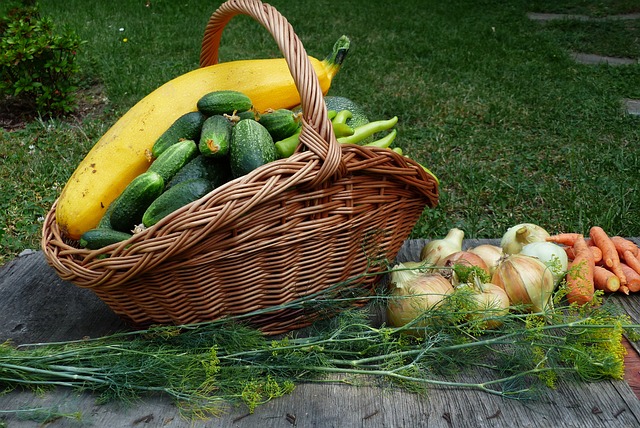
If a little bit of space is available in and around your home we can convert it into a beautiful kitchen garden.
Here it is simply explained the complete guidelines of What is Kitchen gardening.
Some people make a beautiful garden in that space and some utilize it by growing food, to fulfill their daily vegetable needs.
We can use spare land around our home, terrace, and balcony for making a kitchen garden.
Doctors who incorporated nutrition and food recommended that one adult should take at least 300 grams of vegetables in daily food.
There are organic vegetables also available in the market but it’s not at affordable prices, and regular vegetables come into the market after exposure to pesticides. So you have health risks in the future.
So if you have space and can spare at least 1-2 hours a day it’s best to grow your vegetables At home.
There will be some challenges when you start making it, but after some practice, you can conquer them.
The problems you’ll face like a low germination ratio after seed sowing, less yield, poor quality of vegetables, and pest infestation.
But in the end, everything can be conquered if you are consistent, and don’t lose your courage and hope. You can do it.
Start by growing easy food crops like tomato, chili, and capsicum. Because some crops need a little bit of experience for example some Cucurbitaceae creeper veggies need some manual pollination also.
Table of Contents
Benefits of growing Vegetables at Home:
Any time you can have veggies in a kitchen garden
You can have less costly veggies than the market if you plan a kitchen garden in your home.
Free from pesticide residue, because we use farm yard manure at home, and some organic way of pesticide removal techniques, to get organic produce.
You can manage your spare time to have some body movements in your garden to keep you healthy.
Children at home learn this gardening at an early stage of life and understand its importance it. If you plant a small kitchen garden in your home
Usually, people complain that even after hard work we don’t have a good production of vegetables in a kitchen garden.
There are lots of reasons behind it, but the main reason is as below:
Always select vegetables as per recommended weather and season by agriculture universities or state government boards etc.
Enough span of daylight should be there.
For vegetable crops, it’s good to plan as per Kharif, Ravi, and Summer.
For vegetables like Brinjal, chili, tomato, cabbage, cauliflower, and Onion we should grow them in seed trays when they become seedlings uproot them, and plant them on decided soil.
Ivy gourd (Tindora), Bottle gourd, and Pointed gourd (parval) can be planted near supporting fences, and walls, or by providing trailing mess or rods.
In a shady area, you can grow vegetables like Alavi, Dhana, Methi, Fudino, Spinach (palak), Ginger( Adrak, adu), etc.
We can make a small compost pit In the corner of the garden, so we can dump garden waste, and grass leaves in it to make compost for our requirement of organic produce vegetables.
If we have more space in the garden we can also plan papaya, curry neem, drum stick (saragavo), lemon, and banana or one of them.
Prompt practices like shallow soil digging, fertilizer, water, and crop protection should be taken.
We would keep gardening equipment like Kodali-Hoe, Datrada, Khurpi-garden sickle, Pavado-spade, Rake (panjethi), knapsack spray, etc.
Here are the plants for the kitchen garden (in India as well):
- Brinjal, 2.Chili, 3. Tomato, 4. Cabbage, 5.Cauliflower, 6.Onion, 7.Potato, 8. Alvi (Colocasia leaves), 9.Bottle Gourd, 10.Cucumber, 11.Bitter gourd 12.Papdi valor (Indian beans), 13.Kolu (Pumpkin), 14.Galka, 15.Turia (Ridge Gourd), 16.Cluster bean (Guvar), 17.Ladies finger(Bhindi) 18.Choli (Long beans), 19.Spinach, 20.Mula (Radish), 21Carrot, 22.Beetroot, 23.Tandalja, 24.Methi (Fenugreek leaves), 25.Dhana (Coriander), 26.Suva ni bhaji, 27.Parval (Striped pear gourd), 28.Tindola (Little gourd), Garlic.
Kitchen Garden Menu-The timetable of vegetable kitchen garden crops:
| Sr. No. | Crop/Vegetable | Planing time/Season | Growing material | Planting measurements |
| 1 | Brinjal | Summer, monsoon, winter | By seedling planting | 90×75,75×60 cm |
| 2 | Chilly | Monsoon, winter | By seedling planting | 75×60, 60×60 cm |
| 3 | Tomato | Monsoon, winter | By seedling planting | 90×75, 75×60, 60×45 cm |
| 4 | Cabbage | winter | By seedling planting | 45×30, 30×30 cm |
| 5 | Cauliflower | Late monsoon, winter | By seedling planting | 45×30, 30×30 cm |
| 6 | Onion | Monsoon, winter | By seedling planting | 15×10,10×10 cm |
| 7 | Potato | winter | Tuber | 45×15 cm |
| 8 | Alvi (Colocasia leaves) | Monsoon | By Seed | 30×30 cm |
| 9 | Bottle gourd | Summer, monsoon | By Seed | 2×1 meter |
| 10 | Cucumber | monsoon, winter | By Seed | 2×1 meter |
| 11 | Bitter gourd | Summer, monsoon | By Seed | 1×1 meter |
| 12 | Papadi valor (Indian beans) | Late monsoon | By Seed | 120×75 cm |
| 13 | Kolu (Pumpkin) | Monsoon | By Seed | 2×1 meter |
| 14 | Galka | Summer, monsoon | By Seed | 1×1 meter |
| 15 | Turiya (Ridge Gourd) | Summer, monsoon | By Seed | 1×1 meter |
| 16 | Guvar (Cluster beans) | Summer, monsoon | By Seed | 60×20,45×40 cm |
| 17 | Ladies finger (Bhindi) | Summer, monsoon | By Seed | 60×20,45×40 cm |
| 18 | Choli (Long beans) | Summer, monsoon | By Seed | 60×45,60×30 cm |
| 19 | Spinach | Summer, monsoon, winter | By Seed | Punkhine (Seed spreading) |
| 20 | Mula (Radish) | Winter, Summer | By Seed | Punkhine (Seed spreading) |
| 21 | Carrot | winter | By Seed | Punkhine (Seed spreading) |
| 22 | Beetroot | winter | By Seed | Punkhine (Seed spreading) |
| 23 | Tandalja | winter | By Seed | Punkhine (Seed spreading) |
| 24 | Methi (Fenugreek leaves) | winter | By Seed | Punkhine (Seed spreading) |
| 25 | Dhana (Coriander) | winter | By Seed | Punkhine (Seed spreading) |
| 26 | Suvani bhaji | winter | By Seed | Punkhine (Seed spreading) |
| 27 | Parval (Striped pear gourd) | Summer, monsoon | Tukada ( 1-1.5 feet cut twigs of the creeper from an old plant) | 2×1 meter |
| 28 | Tindola (IVY/Little gourd) | Summer, monsoon | Tukada ( 1-1.5 feet cut twigs of the creeper from an old plant ) | 2×1 meter |
| 29 | Garlic | winter | Cut shoot branch | 15×10 cm |
How to grow seedlings
While planning a kitchen garden usually for crops like Brinjal, chili, tomato, cabbage, cauliflower, and onion we need to grow seedlings on the raised bed before they get planted in the decided space.
First, we need a well-researched and well-revised seed for it.
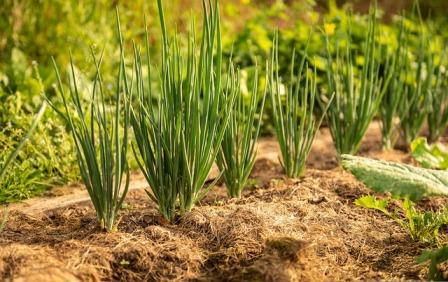
For growing seedlings, we need to make necessary measured raised beds, by mixing well-cured FYM, and then at the distance of 8-10 cm and 1-2 cm deep put a seed of the crop you need. Cover them with light soil, and soon after water them.
It will take 3-4 weeks of time to grow.
You can grow seeds in tea cups available in the market or in small polythene bags.
And also buy seedlings from sellers around you.
Kitchen gardening at home planning
| Season | Planting time | Vegetable crops |
| Monsoon | June- July | Brinjal, Chili, Tomato, Okra, Bottle gourd, Cucumber etc. |
| Winter | October | Garlic, Onion, Radish, Carrot, Peas, Coriander, Phenugreek, etc. |
| Summer | February- March | Choli, Okra, Guvar, Brijnal, Bottle gourd, Watermelon, Bitter gourd, Giloda, Shakkar teti, etc. |
| Perennial | – | Drum stick, Curry neem |
Selection of Land and soil for Kitchen garden-
A mostly horticultural crop like well-drained goradu (loamy) and medium black soil.
In-home soil it is good to add kanp (Loam) and compost fertilizers.
Dig the soil well first, let it dry for a few days and then level it.
They do the measuring of the plot and make necessary lots. First plant layout on paper with calculation.
Soil preparation:
Soil is a very important factor in growing vegetables in the kitchen garden. If the soil around our home is not good, we need to add some good farm soil to the garden. Which should be termite and weed-free.
Fill new soil for 1 to 1.5 feet., dig soil by kodali (hoe) at least 20-30 cm deep. Add some good cured FYM, diveli no khol (castor cake), and vermicompost.
Then level the soil.
If you don’t want to add outside fertilizers as described above you can sow jute seeds, by spreading them randomly. Before it starts in the flowering stage crush it. This will make it naturally fertilized.
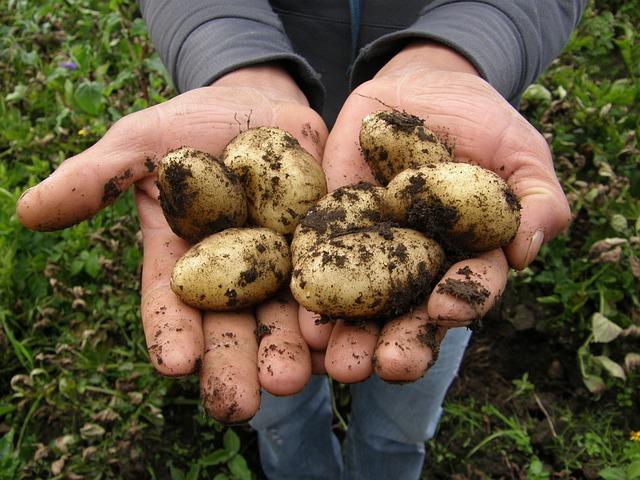
After this, we can start sowing crops or plants or seedlings.
When we do have not enough space in case we live in a flat we can grow vegetables in deep pots trays and even in grow bags also.
For this, we need space on the terrace and a balcony with direct sunlight.
In big pots or grow bags you can plant Brinjal, Chilli, Tomato, bottle gourd, cucumber, etc, and in a less deep pot or bag you can grow fenugreek, Dhana(coriander), and palak (Spinach) successfully.
For more information on this, you can visit the nearest Agriculture university or contact an Agriculture scientist.
For soil preparation of the pot, you can make it with half-good earth soil + FYM (farm yard manure) or vermicompost half part, or we can add Castor cake or Neem cake.
You can learn general soil preparation for your garden here also.
The layout of Kitchen garden

Seed cure:
If the seed rate increases after the sowing of the seeds, we have thin, heightened, and weak stem seedlings, so sow them at recommended distances.
There are chances of seedling rotting while seeding preparation.
There are problems with seed beds like termites, red ants, and sucking pests.
We can apply Trichoderma to avoid ‘sukaro’ (drying of a plant) and rotting in seedlings, Trichoderma can be applied to soil also.
If you want to reduce chemical fertilizer use, we can use Azatobector and phosphate culture.
Seed treatment: As per the size of the seed take 3-5 ml solution deep with them at least 1 kg seed in it. Let this seed dry in a cold place, when they dry use them.
Seedling treatment : 3-5 ml liquid biofertilizer add in clean 1-liter water, a seedling of the crop you are going to sow deep them in this solution for at least 15-20 minutes.
We can mix the 250 ml culture in 15-20kg compost fertilizer and then spread it on the soil.
We can spray solution made in 3-5ml in 1-liter water on the plant in the early morning, and in the late evening.
Planting :
As per described in the table above these are planted with seeds, seeds need to grow in raised beds then seedlings get planted in the planting space.
Spacing for planting is described above.
Some vegetable grows by seed some by following seedling growing and some by tubers.
Watering: in summer they need water at intervals of 8-10 days and in winter they need water at intervals of 12-15 days.
Fertilizers: If we already applied organic fertilizers like composts etc. In base application, the soil is good and plants are growing very well we don’t need to apply chemical fertilizers. Still need arrives we can use Urea, Ammonium sulfate, and NPK (Nitrogen, Phosphorous & Potassium, by acquiring proper guidance. And apply in very fewer quantities.
Crop protection in the Kitchen garden:
Mostly vegetables we grow at home we have some insect problems in the shoots, flowers, and fruits of the plants. So in the starting stage, it’s better to remove such infested plant parts. Better to do soil stirring around the plant base, so the life cycle brake.
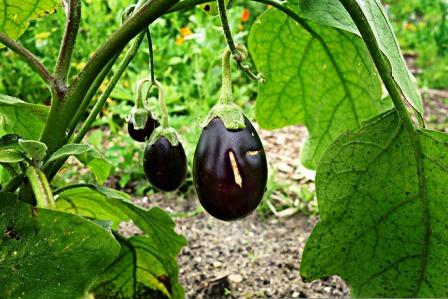
We should not overwater plants.
Use neem cake and poultry manure to avoid soil-born diseases
Use neem oil spray to control pests in vegetables. This stops insects from laying eggs and as they can’t eat sprayed leaves slowly they die.
Other than this we can use pheromone traps, yellow marigold planting, sticky strips, etc to control pests.
If the need arrives to spray pesticide don’t spray here and there do seek expert advice before spraying it.
Importance of Kitchen Garden / Benefits of Kitchen Garden:
Benefits of growing vegetables at Home.
You can have fresh vegetables at home throughout the year whenever you wish.
You can save money by growing at home.
We usually grow veggies without using pesticides at home so we have pest-free veggies at home.
You can make worth of your spare time, at this makes us healthy also.
We can educate our children about flowers, crops, and crop management in real time.
We can save wastewater in our garden by reusing it. So by reducing pollution also.
Kitchen garden produce is healthier than that market products and has more nutrients.
By using kitchen garden waste you can make home fertilizer also.
It makes the atmosphere around our home clean.
Bio pest control in Kitchen garden vegetables/crops
Growing a chemical-free crop around our home is a different joy. Mostly in kitchen gardening Fungal, insects, worms, and virus-borne seed, soil, and air-borne diseases occur.
While we grow at our home we wish that these veggies be free from chemical insecticides.
And have veggies without the residual effects of chemical pesticides.
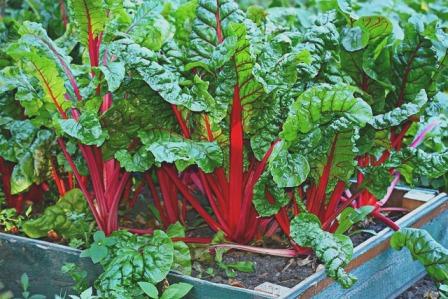
So compare to other pest control types, organic pest control types are easy, cheap, and safe for the environment.
In general, when we grow around at home we found some diseases like sukaro (drying of the plant), bijno kovaro (seed rot), dharuno kovaro, root no kovaro (root rot), Gandthva krumi, panchrangio, kokadva (leaf curl), and pilo panchrangio are main.
Organic pest control is also important in the case of joint disease control.
In organic pest and disease control, we use fungi, organisms like Trichoderma, bacillus, pseudomonas, pesilomisis sp, etc, which controls harmful fungi, organism, and worms.
Biochemicals also provide immunity to plants.
One must have technical knowledge while using biocontrol.
To increase the power of the bio pest control
Pest control in a kitchen garden
Mostly in kitchen gardening, we do at home we find pests on plant parts like shoots, twigs, flowers, and fruits.
So we need to remove such parts in the early stages of the infestations is good.
So, we can break different life cycle stages of the pests.
Do not overwater.
By using biofertilizers and vermicomposts, poultry manure, neem cake termite, and worms can be prevented.
Leaves extracted from some local trees and plants like Karan, mahudao, Arduso, and yellow Nerium can be also sprayed on plants to control pests. Out of these plants, neem is very good at pest control.
We can use fresh neem leaves (10%) and neem seed extract (5%), found effective in decreasing the pest population.
Such formulas play a role in stopping pests from putting their eggs, and they die by eating sprayed leaves.
Rather than this, we can also use a pheromone trap, planting of the yellow inka, and sticky trap also.
Even after doing this if you still have a pest problem you can use pesticides by taking expert advice instead using rough use of it.
1. Dharu no kohvaro (rotting of seedling)- use only the necessary seed quantity. If cloudy weather and heavy rain are there while seedling planting uses 0.6 Bordo mixture ( 600gms morthuthu, 6000gms chuno (lime), in 100-liter water. You can study more about Bordo mixture). Metalaxyl MZ 72% to use 15gms/100 liters water. Then use 3 liters per 1 square meter by jara (garden watering can).
2. Leaf spots – in different vegetables leaf spots occur to different pests. At starting of the disease spray 30gms/10ltr water mixture of mancozeb(75%) on a standing crop.
3. White bhuki charo (powdery mildew)- to control this use we table sulfur by making a mixture of 25gms/10ltr water.
4. Sukaro (dryign) and kohvaro (rotting)- For this, we can use Trichoderma fungi as per the recommendation
Learn More about gardening here.
Conclusion
By learning the basics of kitchen gardening as described you can start planting vegetables at your home to have healthy food at home. It helps to utilize your spare time and gives you light exercise also. After having a good experience you can reduce fertilizer and pesticide use and can go complete organic also in a long run. so read in detail you will definitely have all the basic knowledge of the kitchen garden. Still query you can write to us we will try our best to answer your question.
Reference: “Kitchen garden matena safal upayo” Anand Agriculture University, Anand- Authors: Dr. B H Patel, Dr. V I Joshi, Dr. R R Acharya, Dr. B S Patel, Dr. M R Dabhi. Publisher: Dr. P P Patel
